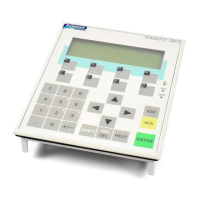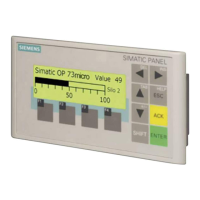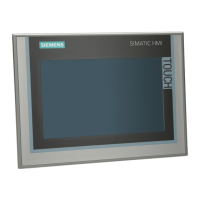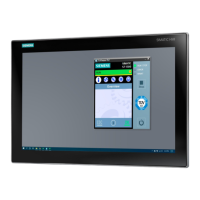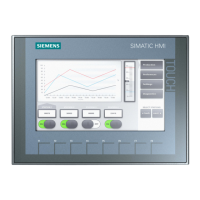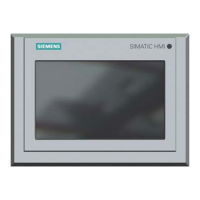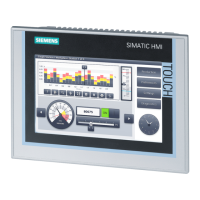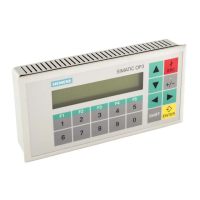
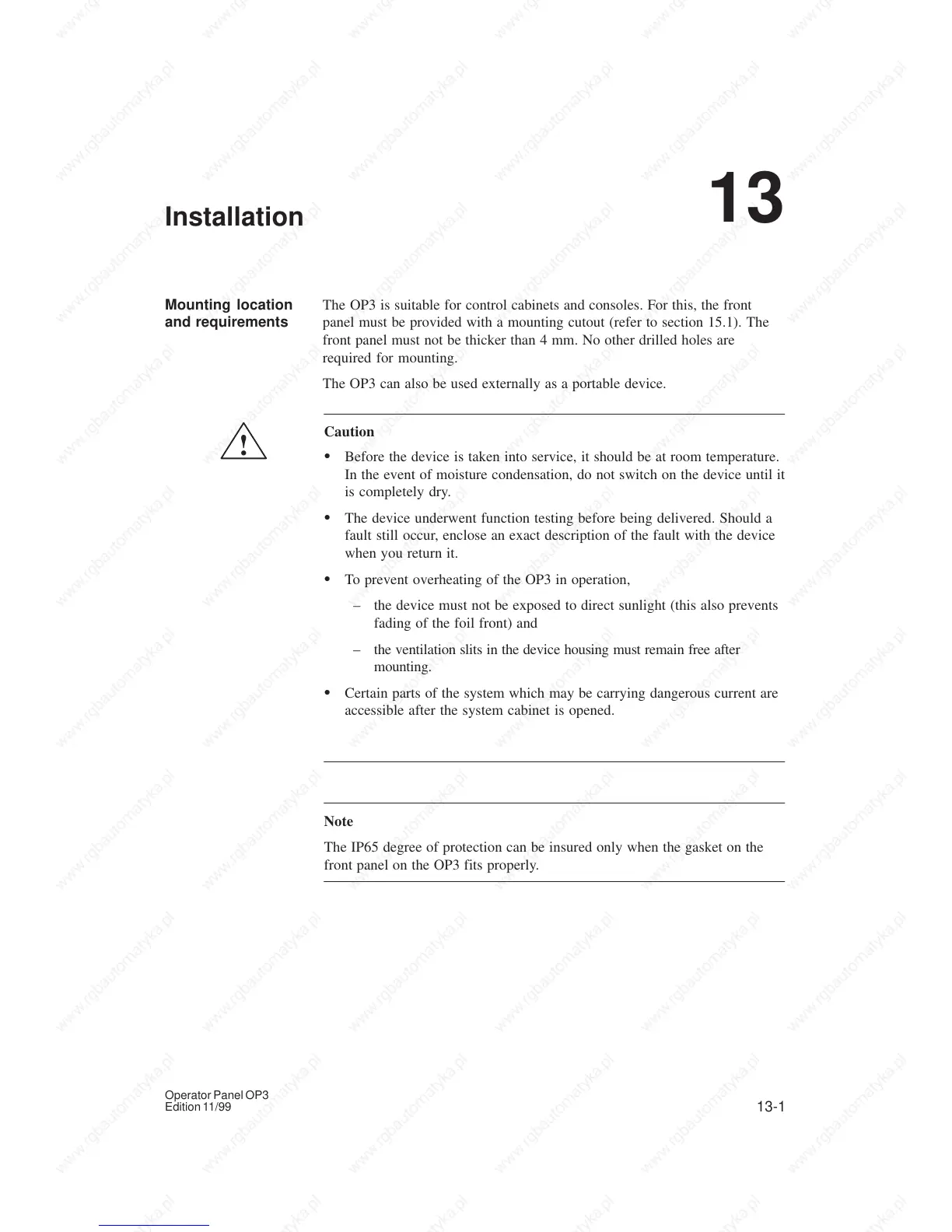
Do you have a question about the Siemens SIMATIC HMI OP3 and is the answer not in the manual?
| Touchscreen | No |
|---|---|
| Power Supply | 24 V DC |
| Protection Class | IP65 |
| Weight | 0.5 kg |
| Display Type | LCD |
| Keys | Function keys |
| Communication Ports | RS-232 |
| Operating Temperature | 0 to 50 °C |
Provides information about the OP3's functionality and operating capabilities.
Details the features and capabilities of the OP3 device.
Explains how to operate the OP3 using its keyboard and keypad.
Describes how to utilize the standard functions and screens of the OP3.
Details the OP3's screen display, components, and management.
Covers methods for preventing unauthorized access using passwords and levels.
Explains the display and handling of event and system messages on the OP3.
Describes how to access and use timers and counters via the OP3.
Explains how to view and modify PLC operands using OP3 functions.
Details how to configure system settings like language, date, and time.
Covers configuring soft keys and screen hierarchies for guided operation.
Explains how to connect the OP3 to SIMATIC S7 automation systems.
Provides instructions for physically installing the OP3 unit.
Details the steps for initial setup and putting the OP3 into operation.
Covers the physical dimensions and connection elements of the OP3.
Explains how to perform hardware tests and monitor OP3 functions.
Provides an overview of standard screens, their functions, and password levels.
Lists and explains system messages, their causes, and actions.
Lists the technical specifications and parameters of the OP3 device.
Details precautions for handling electrostatically sensitive devices.
Outlines the structure and components of SIMATIC HMI documentation.
